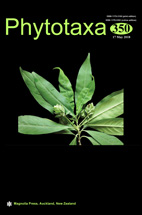Abstract
We present here pollen morphology of 12 native taxa of Lentibulariaceae from Western Cuba with the aim of surveying pollen traits useful for species identification. Pollen grains were studied using light microscopy and scanning electron microscopy to search for new characteristics to contribute to the taxonomy of Lentibulariaceae from western Cuba with the aim of increasing our understanding of pollen morphology. Pollen grains were acetolysed, measured, photographed, and described based on qualitative characteristics. Here we present statistical analyses and multivariate statistics for quantitative data. The pollen grains are medium-sized, isopolar, subprolate to prolate, circular, subcircular to quadrangular amb, zonaperturate, 3-colporate, 4(5)-colporate, (6–)7–18-colporate or porate, lalongate or lolongate endoaperture, or endocingulate in some species. They may also be psilate, psilate-perforate, microreticulate to rugulate exine, and sexine thicker than nexine. Endoaperture with fastigia was reported for Pinguicula ser. Albidae and Lentibulariaceae for the first time in this study. The Utricularia species studied were grouped into three pollen types on the basis of aperture and endoaperture characteristics and shape. Morphological variations observed showed intergeneric pollen diversity in Lentibulariaceae, corroborating the taxonomic importance of such characteristics at a family level.

